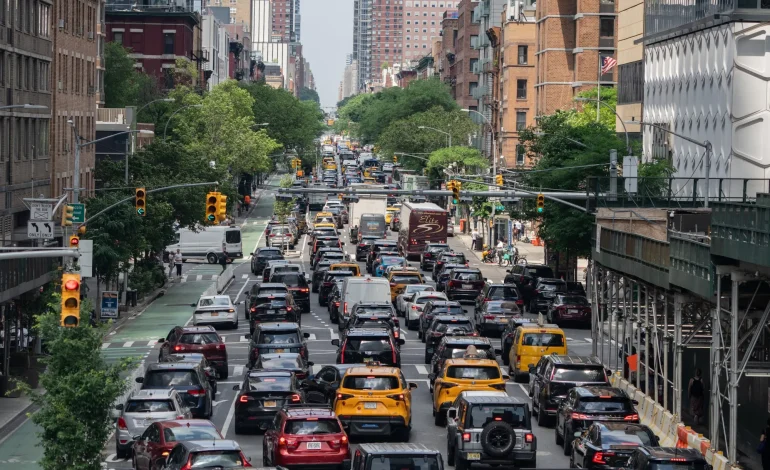Despite a brief respite during the early days of the pandemic, traffic congestion and vehicle miles traveled (VMT) have rebounded to record highs across most of the US, Bloomberg reports, citing transportation analytics firm StreetLight Data.
The report by the firm shows that VMT increased by 12% between May 2019 and May 2024, surpassing pre-pandemic levels. This trend is particularly concerning for advocates working to reduce carbon emissions, as transportation remains the largest contributor to US greenhouse gas emissions.
Almost every major metro area, including most city center neighborhoods, experienced an increase in VMT. New York City saw a particularly alarming 14.7% rise in daily VMT per capita and a 1.8% jump in traffic congestion, the highest increases among the top 25 metro areas analyzed.
However, the report also outlines a few notable exceptions. Only 10 out of the 100 most populous metros in the US have managed to keep VMT below 2019 levels.
The Los Angeles metro leads the pack with a 17% decline in average daily VMT over the past five years. The Oxnard-Thousand Oaks-Ventura area and the San Francisco Bay Area follow closely with 16% and 13% declines, respectively. Notably, San Francisco’s urban core, which has struggled with pandemic recovery, experienced a nearly 26% drop in VMT per capita.
Despite these exceptions, the report suggests that the widespread adoption of hybrid work models may be contributing to higher VMT overall, as people commute longer distances on days they do go into the office.
While a decrease in vehicle travel doesn’t always translate to less congestion, the report emphasizes that tackling the issue requires meaningful policy changes and urban planning decisions to reduce car travel. Adding lanes to roads, studies show, has the opposite effect and actually encourages more driving.
The report concludes that economic growth is not necessarily dependent on increased vehicle travel. Despite reductions in driving in some metros, gross domestic product continued to rise, suggesting that other factors contribute to economic growth.









